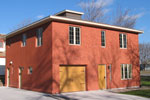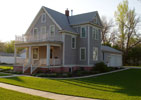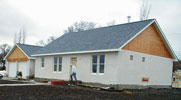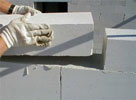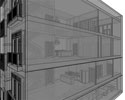Building a Garage
Here we show several steps in building garages and carriage houses with AAC. This particular garage was built in South Dakota where the ground typically freezes two to three feet deep. To prevent soil heaving damage, a four foot high stem wall was poured on top of footings. The stem wall was a poured in place concrete wall eight inches thick and four feet high, with rebar for reinforcement. The footing was a standard 16 inchese wide and eight inches high, also reinforced with number 5 rebar (5/8 inch diameter). The footings rest on undisturbed yellow clay. If the soil had been disturbed, then the footings should have been placed on packed gravel.
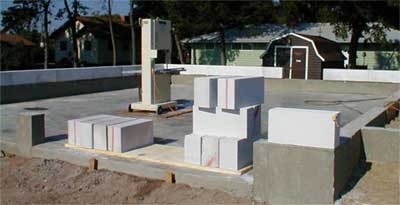 Here you see the top of the stem walls extending above the finished floor of the garage. As this garage was not intended to be heated living space, not effort was made to insulate the exterior to prevent heat bridging in the poured concrete stem walls.
Here you see the top of the stem walls extending above the finished floor of the garage. As this garage was not intended to be heated living space, not effort was made to insulate the exterior to prevent heat bridging in the poured concrete stem walls.
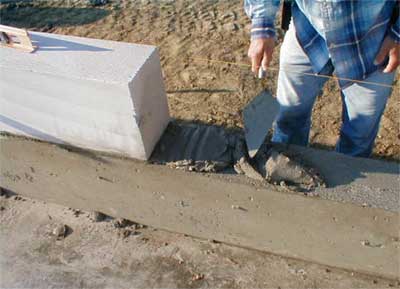 Leveling bed mortar. Here we are using AAC block that are eight inches wide, 12 inches high and 24 inches long. They weigh roughly 50 pounds when you take them off the pallet.
Leveling bed mortar. Here we are using AAC block that are eight inches wide, 12 inches high and 24 inches long. They weigh roughly 50 pounds when you take them off the pallet.
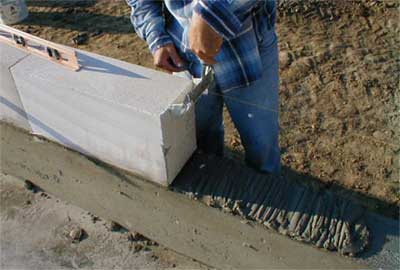 Next we applying thinset mortar to previous AAC block.
Next we applying thinset mortar to previous AAC block.
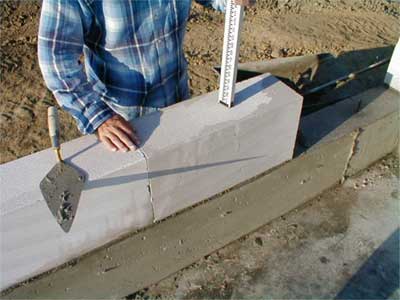 After placeing the next AAC block we check the elevation with either a stringline, or in this case a builders level, which is similar to a transit (telescope on a tripod).
After placeing the next AAC block we check the elevation with either a stringline, or in this case a builders level, which is similar to a transit (telescope on a tripod).
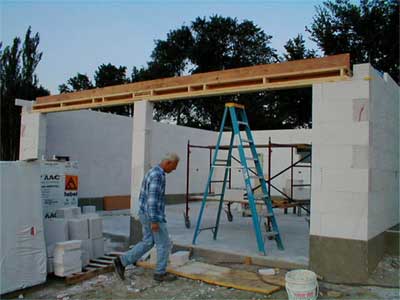
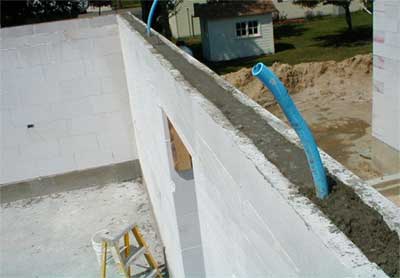 Here we are poured the bond beam at the top of the garage wall. The bond beam is roughly four inches wide and six inches deep with two pieces of rebar running the circumfrance of the building.The blue pipe is a flexible electrical conduit that runs vertically down to the light switches.
Here we are poured the bond beam at the top of the garage wall. The bond beam is roughly four inches wide and six inches deep with two pieces of rebar running the circumfrance of the building.The blue pipe is a flexible electrical conduit that runs vertically down to the light switches.
The roof is on.
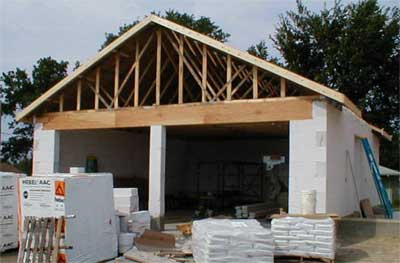 The roof is on and the garage is nearly complete.
The roof is on and the garage is nearly complete.
